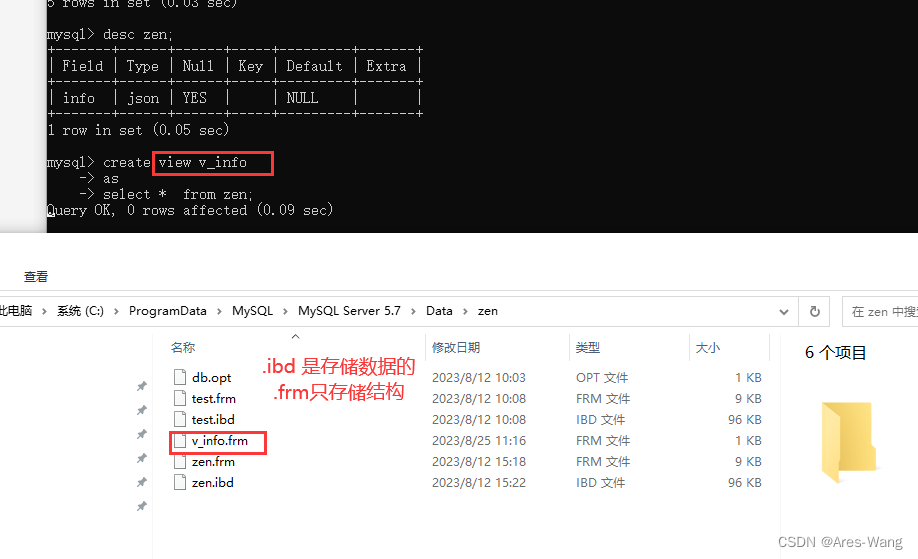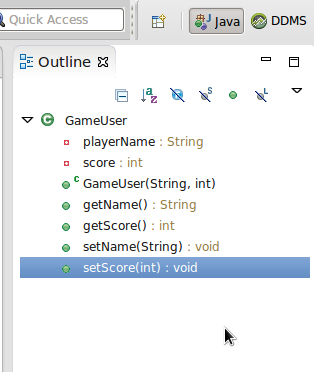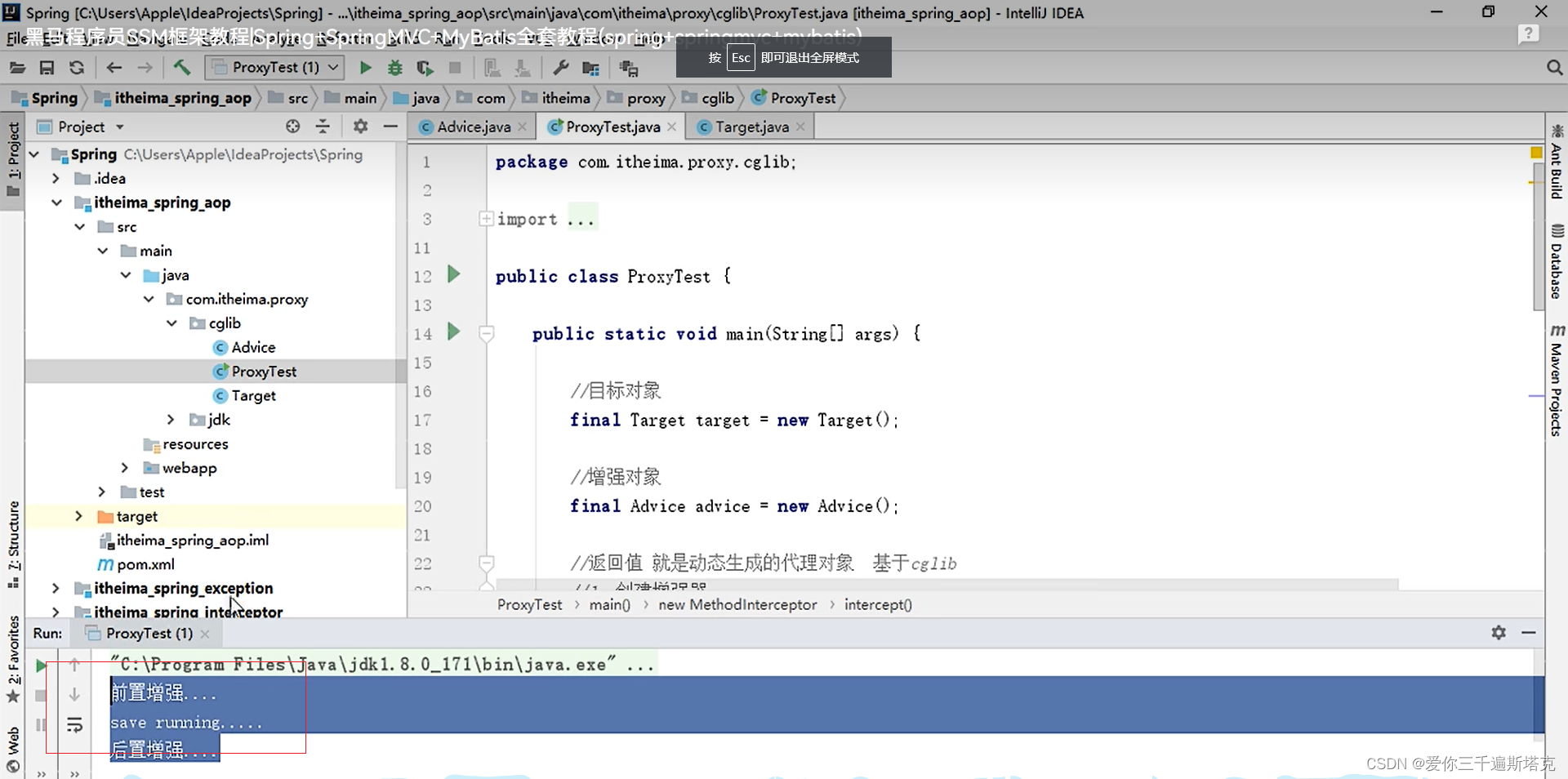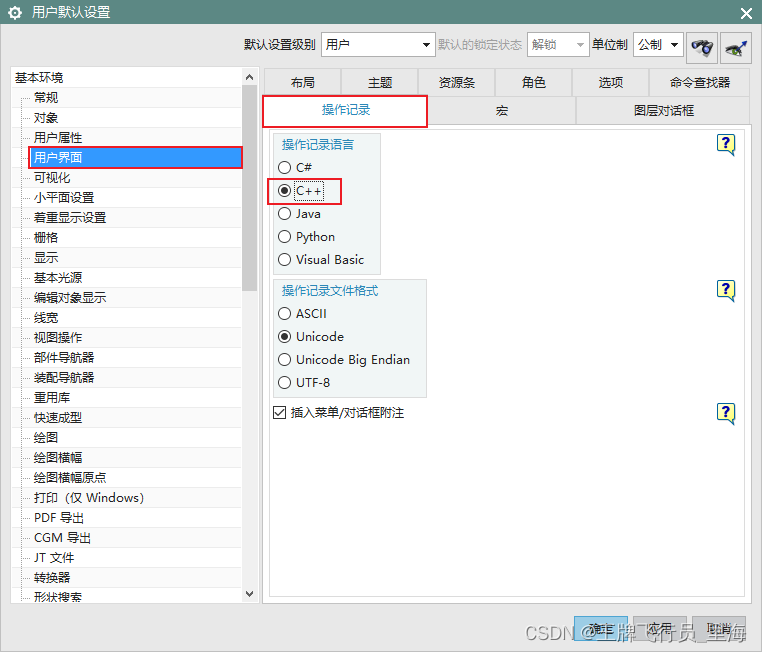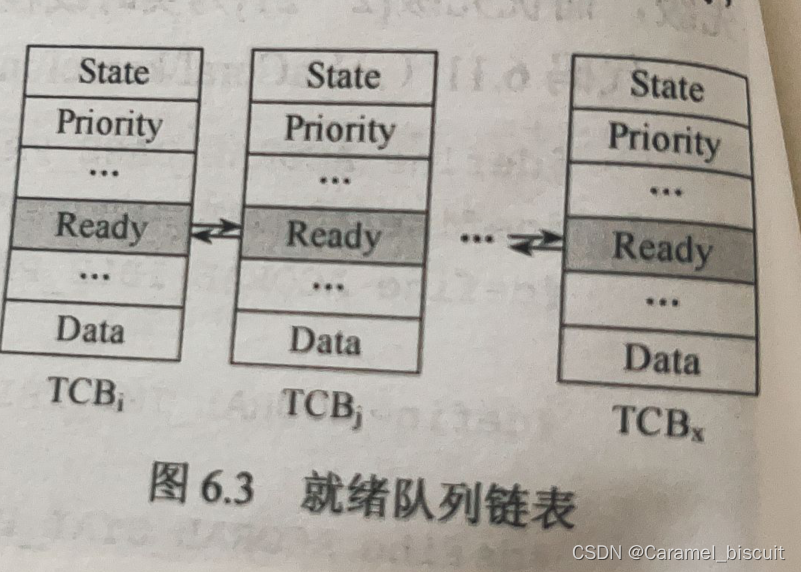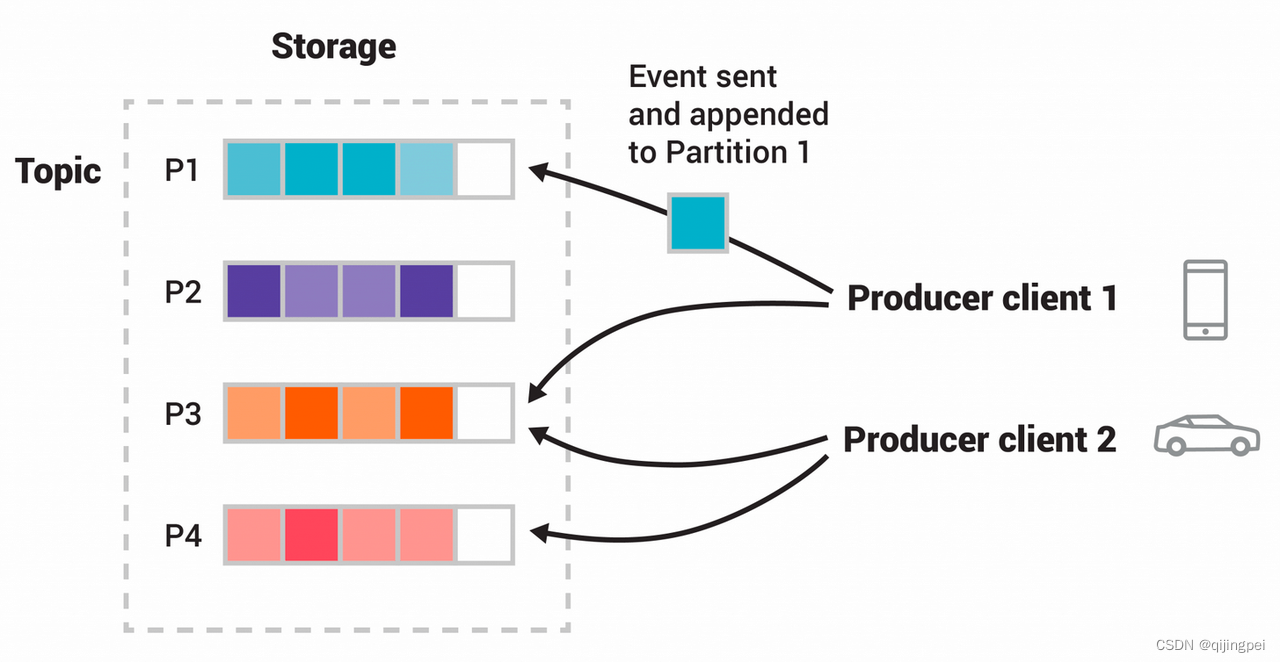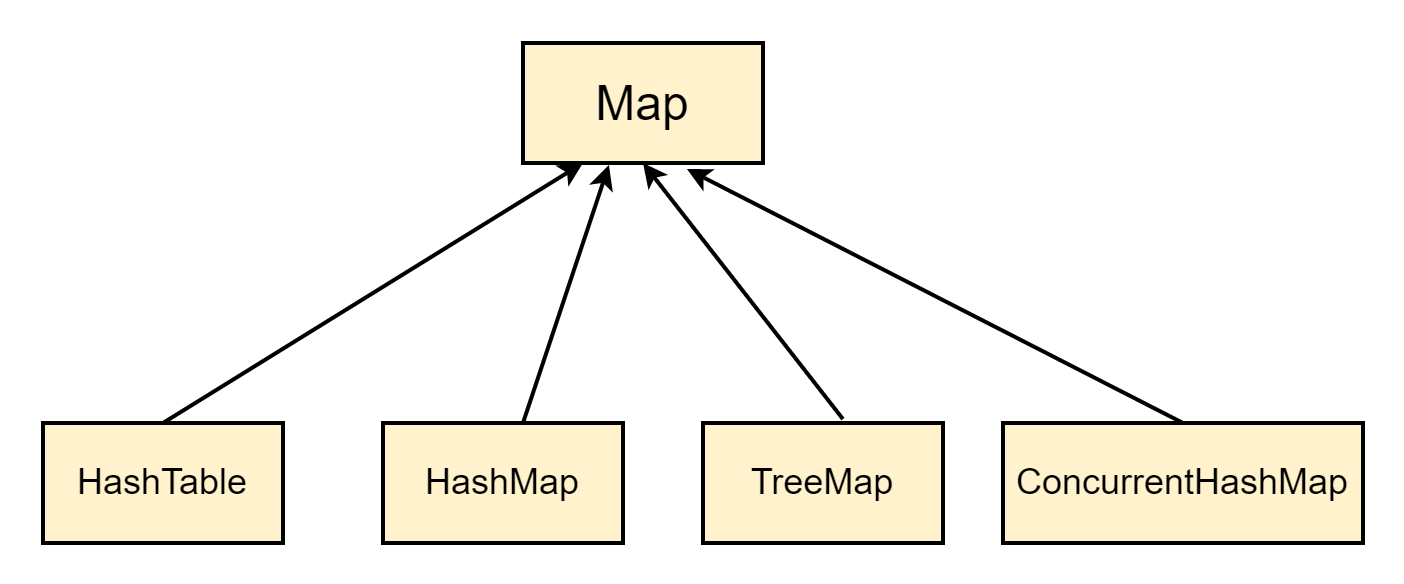六大数据类型 见python基本功
import numpy as np
import pandas as pd
数据预处理
缺失值处理
float_data = pd.Series([1.2, -3.5, np.nan, 0])
float_data
0 1.2
1 -3.5
2 NaN
3 0.0
dtype: float64
查看缺失值
float_data.isna()
0 False
1 False
2 True
3 False
dtype: bool
string_data = pd.Series(["aardvark", np.nan, None, "avocado"])
string_data
string_data.isna()
float_data = pd.Series([1, 2, None], dtype='float64')
float_data
float_data.isna()
0 False
1 False
2 True
dtype: bool
删除缺失值
data = pd.Series([1, np.nan, 3.5, np.nan, 7])
data.dropna()
0 1.0
2 3.5
4 7.0
dtype: float64
data[data.notna()]
0 1.0
2 3.5
4 7.0
dtype: float64
data = pd.DataFrame([[1., 6.5, 3.], [1., np.nan, np.nan],
[np.nan, np.nan, np.nan], [np.nan, 6.5, 3.]])
print(data)
data.dropna()
0 1 2
0 1.0 6.5 3.0
1 1.0 NaN NaN
2 NaN NaN NaN
3 NaN 6.5 3.0
|
| 0 | 1 | 2 |
| — | — | — | — |
| 0 | 1.0 | 6.5 | 3.0 |
data.dropna(how="all")##删除行全部都是缺失值
|
| 0 | 1 | 2 |
| — | — | — | — |
| 0 | 1.0 | 6.5 | 3.0 |
| 1 | 1.0 | NaN | NaN |
| 3 | NaN | 6.5 | 3.0 |
data[4] = np.nan
data
data.dropna(axis="columns", how="all")##删除列全部都是缺失值
|
| 0 | 1 | 2 |
| — | — | — | — |
| 0 | 1.0 | 6.5 | 3.0 |
| 1 | 1.0 | NaN | NaN |
| 2 | NaN | NaN | NaN |
| 3 | NaN | 6.5 | 3.0 |
df = pd.DataFrame(np.random.standard_normal((7, 3)))
df.iloc[:4, 1] = np.nan
df.iloc[:2, 2] = np.nan
print(df)
df.dropna()#删除含缺失值的行
0 1 2
0 0.476985 NaN NaN
1 -0.577087 NaN NaN
2 0.523772 NaN 1.343810
3 -0.713544 NaN -2.370232
4 -1.860761 -0.860757 0.560145
5 -1.265934 0.119827 -1.063512
6 0.332883 -2.359419 -0.199543
|
| 0 | 1 | 2 |
| — | — | — | — |
| 4 | -1.860761 | -0.860757 | 0.560145 |
| 5 | -1.265934 | 0.119827 | -1.063512 |
| 6 | 0.332883 | -2.359419 | -0.199543 |
df.dropna(thresh=2)# 删除至少有两个缺失值的行
|
| 0 | 1 | 2 |
| — | — | — | — |
| 2 | 0.523772 | NaN | 1.343810 |
| 3 | -0.713544 | NaN | -2.370232 |
| 4 | -1.860761 | -0.860757 | 0.560145 |
| 5 | -1.265934 | 0.119827 | -1.063512 |
| 6 | 0.332883 | -2.359419 | -0.199543 |
缺失值填充
df.fillna(0)##缺失值填充为0
|
| 0 | 1 | 2 |
| — | — | — | — |
| 0 | 0.476985 | 0.000000 | 0.000000 |
| 1 | -0.577087 | 0.000000 | 0.000000 |
| 2 | 0.523772 | 0.000000 | 1.343810 |
| 3 | -0.713544 | 0.000000 | -2.370232 |
| 4 | -1.860761 | -0.860757 | 0.560145 |
| 5 | -1.265934 | 0.119827 | -1.063512 |
| 6 | 0.332883 | -2.359419 | -0.199543 |
df.fillna({1: 0.5, 2: 0})#不同列填充不同缺失值
|
| 0 | 1 | 2 |
| — | — | — | — |
| 0 | 0.476985 | 0.500000 | 0.000000 |
| 1 | -0.577087 | 0.500000 | 0.000000 |
| 2 | 0.523772 | 0.500000 | 1.343810 |
| 3 | -0.713544 | 0.500000 | -2.370232 |
| 4 | -1.860761 | -0.860757 | 0.560145 |
| 5 | -1.265934 | 0.119827 | -1.063512 |
| 6 | 0.332883 | -2.359419 | -0.199543 |
df = pd.DataFrame(np.random.standard_normal((6, 3)))
df.iloc[2:, 1] = np.nan
df.iloc[4:, 2] = np.nan
df
|
| 0 | 1 | 2 |
| — | — | — | — |
| 0 | -1.541996 | -0.970736 | -1.307030 |
| 1 | 0.286350 | 0.377984 | -0.753887 |
| 2 | 0.331286 | NaN | 0.069877 |
| 3 | 0.246674 | NaN | 1.004812 |
| 4 | 1.327195 | NaN | NaN |
| 5 | 0.022185 | NaN | NaN |
df.fillna(method="ffill")#向下填充
|
| 0 | 1 | 2 |
| — | — | — | — |
| 0 | -1.541996 | -0.970736 | -1.307030 |
| 1 | 0.286350 | 0.377984 | -0.753887 |
| 2 | 0.331286 | 0.377984 | 0.069877 |
| 3 | 0.246674 | 0.377984 | 1.004812 |
| 4 | 1.327195 | 0.377984 | 1.004812 |
| 5 | 0.022185 | 0.377984 | 1.004812 |
df.fillna(method="ffill", limit=2)#向下填充,限制填充数量=2
|
| 0 | 1 | 2 |
| — | — | — | — |
| 0 | -1.541996 | -0.970736 | -1.307030 |
| 1 | 0.286350 | 0.377984 | -0.753887 |
| 2 | 0.331286 | 0.377984 | 0.069877 |
| 3 | 0.246674 | 0.377984 | 1.004812 |
| 4 | 1.327195 | NaN | 1.004812 |
| 5 | 0.022185 | NaN | 1.004812 |
data = pd.Series([1., np.nan, 3.5, np.nan, 7])
data.fillna(data.mean())#以平均值填充
0 1.000000
1 3.833333
2 3.500000
3 3.833333
4 7.000000
dtype: float64
重复值处理
data = pd.DataFrame({"k1": ["one", "two"] * 3 + ["two"],
"k2": [1, 1, 2, 3, 3, 4, 4]})
data
|
| k1 | k2 |
| — | — | — |
| 0 | one | 1 |
| 1 | two | 1 |
| 2 | one | 2 |
| 3 | two | 3 |
| 4 | one | 3 |
| 5 | two | 4 |
| 6 | two | 4 |
查看是否存在重复值
data.duplicated()
0 False
1 False
2 False
3 False
4 False
5 False
6 True
dtype: bool
删除重复值
data.drop_duplicates()
|
| k1 | k2 |
| — | — | — |
| 0 | one | 1 |
| 1 | two | 1 |
| 2 | one | 2 |
| 3 | two | 3 |
| 4 | one | 3 |
| 5 | two | 4 |
data["v1"] = range(7)
data
|
| k1 | k2 | v1 |
| — | — | — | — |
| 0 | one | 1 | 0 |
| 1 | two | 1 | 1 |
| 2 | one | 2 | 2 |
| 3 | two | 3 | 3 |
| 4 | one | 3 | 4 |
| 5 | two | 4 | 5 |
| 6 | two | 4 | 6 |
data.drop_duplicates(subset=["k1"])#只要k1列有重复值就去重,保留第一行
|
| k1 | k2 | v1 |
| — | — | — | — |
| 0 | one | 1 | 0 |
| 1 | two | 1 | 1 |
data.drop_duplicates(["k1", "k2"], keep="last")#只要k1&k2有重复值就去重,保留最后一行
|
| k1 | k2 | v1 |
| — | — | — | — |
| 0 | one | 1 | 0 |
| 1 | two | 1 | 1 |
| 2 | one | 2 | 2 |
| 3 | two | 3 | 3 |
| 4 | one | 3 | 4 |
| 6 | two | 4 | 6 |
函数映射
data = pd.DataFrame({"food": ["bacon", "pulled pork", "bacon",
"pastrami", "corned beef", "bacon",
"pastrami", "honey ham", "nova lox"],
"ounces": [4, 3, 12, 6, 7.5, 8, 3, 5, 6]})
data
|
| food | ounces |
| — | — | — |
| 0 | bacon | 4.0 |
| 1 | pulled pork | 3.0 |
| 2 | bacon | 12.0 |
| 3 | pastrami | 6.0 |
| 4 | corned beef | 7.5 |
| 5 | bacon | 8.0 |
| 6 | pastrami | 3.0 |
| 7 | honey ham | 5.0 |
| 8 | nova lox | 6.0 |
map()将字典中的key映射为value
meat_to_animal = {
"bacon": "pig",
"pulled pork": "pig",
"pastrami": "cow",
"corned beef": "cow",
"honey ham": "pig",
"nova lox": "salmon"
}
data["animal"] = data["food"].map(meat_to_animal)
data
|
| food | ounces | animal |
| — | — | — | — |
| 0 | bacon | 4.0 | pig |
| 1 | pulled pork | 3.0 | pig |
| 2 | bacon | 12.0 | pig |
| 3 | pastrami | 6.0 | cow |
| 4 | corned beef | 7.5 | cow |
| 5 | bacon | 8.0 | pig |
| 6 | pastrami | 3.0 | cow |
| 7 | honey ham | 5.0 | pig |
| 8 | nova lox | 6.0 | salmon |
def get_animal(x):
return meat_to_animal[x]
data["food"].map(get_animal)
0 pig
1 pig
2 pig
3 cow
4 cow
5 pig
6 cow
7 pig
8 salmon
Name: food, dtype: object
替换
data = pd.Series([1., -999., 2., -999., -1000., 3.])
data
0 1.0
1 -999.0
2 2.0
3 -999.0
4 -1000.0
5 3.0
dtype: float64
单值替换
data.replace(-999, np.nan)#将-999替换为缺失值
0 1.0
1 NaN
2 2.0
3 NaN
4 -1000.0
5 3.0
dtype: float64
多值替换
data.replace([-999, -1000], np.nan)#将-999&-1000替换为缺失值
0 1.0
1 NaN
2 2.0
3 NaN
4 NaN
5 3.0
dtype: float64
data.replace([-999, -1000], [np.nan, 0])#将-999替换为缺失值,-1000替换为0
0 1.0
1 NaN
2 2.0
3 NaN
4 0.0
5 3.0
dtype: float64
data.replace({-999: np.nan, -1000: 0})#将-999替换为缺失值,-1000替换为0
0 1.0
1 NaN
2 2.0
3 NaN
4 0.0
5 3.0
dtype: float64
data = pd.DataFrame(np.arange(12).reshape((3, 4)),
index=["Ohio", "Colorado", "New York"],
columns=["one", "two", "three", "four"])
def transform(x):
return x[:4].upper()
data.index.map(transform)
Index(['OHIO', 'COLO', 'NEW '], dtype='object')
data.index = data.index.map(transform)
data
|
| one | two | three | four |
| — | — | — | — | — |
| OHIO | 0 | 1 | 2 | 3 |
| COLO | 4 | 5 | 6 | 7 |
| NEW | 8 | 9 | 10 | 11 |
重命名rename
data.rename(index=str.title, columns=str.upper)
|
| ONE | TWO | THREE | FOUR |
| — | — | — | — | — |
| Ohio | 0 | 1 | 2 | 3 |
| Colo | 4 | 5 | 6 | 7 |
| New | 8 | 9 | 10 | 11 |
data.rename(index={"OHIO": "INDIANA"},
columns={"three": "peekaboo"})
|
| one | two | peekaboo | four |
| — | — | — | — | — |
| INDIANA | 0 | 1 | 2 | 3 |
| COLO | 4 | 5 | 6 | 7 |
| NEW | 8 | 9 | 10 | 11 |
数据分箱pd.cut&pd.qcut
-
• pd.cut() 将指定序列 x,按指定数量等间距的划分(根据值本身而不是这些值的频率选择均匀分布的bins),或按照指定间距划分
-
• pd.qcut() 将指定序列 x,划分为 q 个区间,使落在每个区间的记录数一致
ages = [20, 22, 25, 27, 21, 23, 37, 31, 61, 45, 41, 32]
bins = [18, 25, 35, 60, 100]
age_categories = pd.cut(ages, bins)
age_categories
[(18, 25], (18, 25], (18, 25], (25, 35], (18, 25], ..., (25, 35], (60, 100], (35, 60], (35, 60], (25, 35]]
Length: 12
Categories (4, interval[int64, right]): [(18, 25] < (25, 35] < (35, 60] < (60, 100]]
age_categories.codes
age_categories.categories
age_categories.categories[0]
pd.value_counts(age_categories)
(18, 25] 5
(25, 35] 3
(35, 60] 3
(60, 100] 1
dtype: int64
pd.cut(ages, bins, right=False)
[[18, 25), [18, 25), [25, 35), [25, 35), [18, 25), ..., [25, 35), [60, 100), [35, 60), [35, 60), [25, 35)]
Length: 12
Categories (4, interval[int64, left]): [[18, 25) < [25, 35) < [35, 60) < [60, 100)]
group_names = ["Youth", "YoungAdult", "MiddleAged", "Senior"]
pd.cut(ages, bins, labels=group_names)
['Youth', 'Youth', 'Youth', 'YoungAdult', 'Youth', ..., 'YoungAdult', 'Senior', 'MiddleAged', 'MiddleAged', 'YoungAdult']
Length: 12
Categories (4, object): ['Youth' < 'YoungAdult' < 'MiddleAged' < 'Senior']
data = np.random.uniform(size=20)
pd.cut(data, 4, precision=2)
[(0.32, 0.53], (0.74, 0.95], (0.74, 0.95], (0.53, 0.74], (0.11, 0.32], ..., (0.74, 0.95], (0.11, 0.32], (0.74, 0.95], (0.32, 0.53], (0.74, 0.95]]
Length: 20
Categories (4, interval[float64, right]): [(0.11, 0.32] < (0.32, 0.53] < (0.53, 0.74] < (0.74, 0.95]]
data = np.random.standard_normal(1000)
quartiles = pd.qcut(data, 4, precision=2)
quartiles
pd.value_counts(quartiles)
(-2.96, -0.69] 250
(-0.69, -0.032] 250
(-0.032, 0.61] 250
(0.61, 3.93] 250
dtype: int64
pd.qcut(data, [0, 0.1, 0.5, 0.9, 1.]).value_counts()
(-2.9499999999999997, -1.187] 100
(-1.187, -0.0321] 400
(-0.0321, 1.287] 400
(1.287, 3.928] 100
dtype: int64
data = pd.DataFrame(np.random.standard_normal((1000, 4)))
data.describe()
|
| 0 | 1 | 2 | 3 |
| — | — | — | — | — |
| count | 1000.000000 | 1000.000000 | 1000.000000 | 1000.000000 |
| mean | -0.047439 | 0.046069 | 0.024366 | -0.006350 |
| std | 0.997187 | 0.998359 | 1.008925 | 0.993665 |
| min | -3.428254 | -3.645860 | -3.184377 | -3.745356 |
| 25% | -0.743886 | -0.599807 | -0.612162 | -0.697084 |
| 50% | -0.086309 | 0.043663 | -0.013609 | -0.026381 |
| 75% | 0.624413 | 0.746527 | 0.690847 | 0.694459 |
| max | 3.366626 | 2.653656 | 3.525865 | 2.735527 |
col = data[2]
col[col.abs() > 3]
55 3.260383
230 -3.056990
317 -3.184377
777 3.525865
Name: 2, dtype: float64
data[(data.abs() > 3).any(axis="columns")]
|
| 0 | 1 | 2 | 3 |
| — | — | — | — | — |
| 36 | -2.315555 | 0.457246 | -0.025907 | -3.399312 |
| 55 | 0.050188 | 1.951312 | 3.260383 | 0.963301 |
| 131 | 0.146326 | 0.508391 | -0.196713 | -3.745356 |
| 230 | -0.293333 | -0.242459 | -3.056990 | 1.918403 |
| 254 | -3.428254 | -0.296336 | -0.439938 | -0.867165 |
| 317 | 0.275144 | 1.179227 | -3.184377 | 1.369891 |
| 539 | -0.362528 | -3.548824 | 1.553205 | -2.186301 |
| 631 | 3.366626 | -2.372214 | 0.851010 | 1.332846 |
| 777 | -0.658090 | -0.207434 | 3.525865 | 0.283070 |
| 798 | 0.599947 | -3.645860 | 0.255475 | -0.549574 |
data[data.abs() > 3] = np.sign(data) * 3
data.describe()
|
| 0 | 1 | 2 | 3 |
| — | — | — | — | — |
| count | 1000.000000 | 1000.000000 | 1000.000000 | 1000.000000 |
| mean | -0.047378 | 0.047263 | 0.023821 | -0.005206 |
| std | 0.994634 | 0.994342 | 1.005685 | 0.989845 |
| min | -3.000000 | -3.000000 | -3.000000 | -3.000000 |
| 25% | -0.743886 | -0.599807 | -0.612162 | -0.697084 |
| 50% | -0.086309 | 0.043663 | -0.013609 | -0.026381 |
| 75% | 0.624413 | 0.746527 | 0.690847 | 0.694459 |
| max | 3.000000 | 2.653656 | 3.000000 | 2.735527 |
np.sign(data).head()
|
| 0 | 1 | 2 | 3 |
| — | — | — | — | — |
| 0 | -1.0 | 1.0 | -1.0 | 1.0 |
| 1 | -1.0 | 1.0 | -1.0 | 1.0 |
| 2 | -1.0 | -1.0 | -1.0 | -1.0 |
| 3 | -1.0 | 1.0 | 1.0 | -1.0 |
| 4 | 1.0 | 1.0 | 1.0 | -1.0 |
随机重排列
df = pd.DataFrame(np.arange(5 * 7).reshape((5, 7)))
df
sampler = np.random.permutation(5)#permutation:产生0到n-1的所有整数的随机排列
sampler
array([2, 4, 3, 0, 1])
df.take(sampler)#行随机排列
|
| 0 | 1 | 2 | 3 | 4 | 5 | 6 |
| — | — | — | — | — | — | — | — |
| 2 | 14 | 15 | 16 | 17 | 18 | 19 | 20 |
| 4 | 28 | 29 | 30 | 31 | 32 | 33 | 34 |
| 3 | 21 | 22 | 23 | 24 | 25 | 26 | 27 |
| 0 | 0 | 1 | 2 | 3 | 4 | 5 | 6 |
| 1 | 7 | 8 | 9 | 10 | 11 | 12 | 13 |
df.iloc[sampler]
|
| 0 | 1 | 2 | 3 | 4 | 5 | 6 |
| — | — | — | — | — | — | — | — |
| 2 | 14 | 15 | 16 | 17 | 18 | 19 | 20 |
| 4 | 28 | 29 | 30 | 31 | 32 | 33 | 34 |
| 3 | 21 | 22 | 23 | 24 | 25 | 26 | 27 |
| 0 | 0 | 1 | 2 | 3 | 4 | 5 | 6 |
| 1 | 7 | 8 | 9 | 10 | 11 | 12 | 13 |
column_sampler = np.random.permutation(7)
column_sampler
df.take(column_sampler, axis="columns")#列随机排列
|
| 6 | 2 | 1 | 3 | 4 | 0 | 5 |
| — | — | — | — | — | — | — | — |
| 0 | 6 | 2 | 1 | 3 | 4 | 0 | 5 |
| 1 | 13 | 9 | 8 | 10 | 11 | 7 | 12 |
| 2 | 20 | 16 | 15 | 17 | 18 | 14 | 19 |
| 3 | 27 | 23 | 22 | 24 | 25 | 21 | 26 |
| 4 | 34 | 30 | 29 | 31 | 32 | 28 | 33 |
随机采样
df.sample(n=3)# n指定采样的个数
|
| 0 | 1 | 2 | 3 | 4 | 5 | 6 |
| — | — | — | — | — | — | — | — |
| 2 | 14 | 15 | 16 | 17 | 18 | 19 | 20 |
| 4 | 28 | 29 | 30 | 31 | 32 | 33 | 34 |
| 1 | 7 | 8 | 9 | 10 | 11 | 12 | 13 |
choices = pd.Series([5, 7, -1, 6, 4])
choices.sample(n=10, replace=True)
0 5
1 7
0 5
0 5
2 -1
4 4
2 -1
2 -1
0 5
4 4
dtype: int64
哑变量编码
df = pd.DataFrame({"key": ["b", "b", "a", "c", "a", "b"],
"data1": range(6)})
df
|
| key | data1 |
| — | — | — |
| 0 | b | 0 |
| 1 | b | 1 |
| 2 | a | 2 |
| 3 | c | 3 |
| 4 | a | 4 |
| 5 | b | 5 |
pd.get_dummies(df["key"])
|
| a | b | c |
| — | — | — | — |
| 0 | 0 | 1 | 0 |
| 1 | 0 | 1 | 0 |
| 2 | 1 | 0 | 0 |
| 3 | 0 | 0 | 1 |
| 4 | 1 | 0 | 0 |
| 5 | 0 | 1 | 0 |
dummies = pd.get_dummies(df["key"], prefix="key")##前缀为key
df_with_dummy = df[["data1"]].join(dummies)#合并数据集
df_with_dummy
|
| data1 | key_a | key_b | key_c |
| — | — | — | — | — |
| 0 | 0 | 0 | 1 | 0 |
| 1 | 1 | 0 | 1 | 0 |
| 2 | 2 | 1 | 0 | 0 |
| 3 | 3 | 0 | 0 | 1 |
| 4 | 4 | 1 | 0 | 0 |
| 5 | 5 | 0 | 1 | 0 |
mnames = ["movie_id", "title", "genres"]
movies = pd.read_table("datasets/movielens/movies.dat", sep="::",
header=None, names=mnames, engine="python")
movies[:10]
|
| movie_id | title | genres |
| — | — | — | — |
| 0 | 1 | Toy Story (1995) | Animation|Children’s|Comedy |
| 1 | 2 | Jumanji (1995) | Adventure|Children’s|Fantasy |
| 2 | 3 | Grumpier Old Men (1995) | Comedy|Romance |
| 3 | 4 | Waiting to Exhale (1995) | Comedy|Drama |
| 4 | 5 | Father of the Bride Part II (1995) | Comedy |
| 5 | 6 | Heat (1995) | Action|Crime|Thriller |
| 6 | 7 | Sabrina (1995) | Comedy|Romance |
| 7 | 8 | Tom and Huck (1995) | Adventure|Children’s |
| 8 | 9 | Sudden Death (1995) | Action |
| 9 | 10 | GoldenEye (1995) | Action|Adventure|Thriller |
dummies = movies["genres"].str.get_dummies("|")##将一列中以|分割的字段变成哑变量
dummies.iloc[:10, :6]
|
| Action | Adventure | Animation | Children’s | Comedy | Crime |
| — | — | — | — | — | — | — |
| 0 | 0 | 0 | 1 | 1 | 1 | 0 |
| 1 | 0 | 1 | 0 | 1 | 0 | 0 |
| 2 | 0 | 0 | 0 | 0 | 1 | 0 |
| 3 | 0 | 0 | 0 | 0 | 1 | 0 |
| 4 | 0 | 0 | 0 | 0 | 1 | 0 |
| 5 | 1 | 0 | 0 | 0 | 0 | 1 |
| 6 | 0 | 0 | 0 | 0 | 1 | 0 |
| 7 | 0 | 1 | 0 | 1 | 0 | 0 |
| 8 | 1 | 0 | 0 | 0 | 0 | 0 |
| 9 | 1 | 1 | 0 | 0 | 0 | 0 |
movies_windic = movies.join(dummies.add_prefix("Genre_"))
movies_windic.iloc[0]
movie_id 1
title Toy Story (1995)
genres Animation|Children's|Comedy
Genre_Action 0
Genre_Adventure 0
Genre_Animation 1
Genre_Children's 1
Genre_Comedy 1
Genre_Crime 0
Genre_Documentary 0
Genre_Drama 0
Genre_Fantasy 0
Genre_Film-Noir 0
Genre_Horror 0
Genre_Musical 0
Genre_Mystery 0
Genre_Romance 0
Genre_Sci-Fi 0
Genre_Thriller 0
Genre_War 0
Genre_Western 0
Name: 0, dtype: object
np.random.seed(12345) # to make the example repeatable
values = np.random.uniform(size=10)
values
bins = [0, 0.2, 0.4, 0.6, 0.8, 1]
pd.get_dummies(pd.cut(values, bins))
|
| (0.0, 0.2] | (0.2, 0.4] | (0.4, 0.6] | (0.6, 0.8] | (0.8, 1.0] |
| — | — | — | — | — | — |
| 0 | 0 | 0 | 0 | 0 | 1 |
| 1 | 0 | 1 | 0 | 0 | 0 |
| 2 | 1 | 0 | 0 | 0 | 0 |
| 3 | 0 | 1 | 0 | 0 | 0 |
| 4 | 0 | 0 | 1 | 0 | 0 |
| 5 | 0 | 0 | 1 | 0 | 0 |
| 6 | 0 | 0 | 0 | 0 | 1 |
| 7 | 0 | 0 | 0 | 1 | 0 |
| 8 | 0 | 0 | 0 | 1 | 0 |
| 9 | 0 | 0 | 0 | 1 | 0 |
正则表达式
s = pd.Series([1, 2, 3, None])
s
s.dtype
dtype('float64')
s = pd.Series([1, 2, 3, None], dtype=pd.Int64Dtype())
s
s.isna()
s.dtype
Int64Dtype()
s[3]
s[3] is pd.NA
True
s = pd.Series([1, 2, 3, None], dtype="Int64")
s = pd.Series(['one', 'two', None, 'three'], dtype=pd.StringDtype())
s
0 one
1 two
2 <NA>
3 three
dtype: string
df = pd.DataFrame({"A": [1, 2, None, 4],
"B": ["one", "two", "three", None],
"C": [False, None, False, True]})
df
df["A"] = df["A"].astype("Int64")
df["B"] = df["B"].astype("string")
df["C"] = df["C"].astype("boolean")
df
|
| A | B | C |
| — | — | — | — |
| 0 | 1 | one | False |
| 1 | 2 | two | |
| 2 | | three | False |
| 3 | 4 | | True |
val = "a,b, guido"
val.split(",")
['a', 'b', ' guido']
pieces = [x.strip() for x in val.split(",")]
pieces
['a', 'b', 'guido']
first, second, third = pieces
first + "::" + second + "::" + third
'a::b::guido'
"::".join(pieces)
'a::b::guido'
"guido" in val
val.index(",")
val.find(":")
-1
val.index(":")
---------------------------------------------------------------------------
ValueError Traceback (most recent call last)
~\AppData\Local\Temp\ipykernel_20552\2601145560.py in <module>
----> 1 val.index(":")
ValueError: substring not found
val.count(",")
2
val.replace(",", "::")
val.replace(",", "")
'ab guido'
import re
text = "foo bar\t baz \tqux"
re.split(r"\s+", text)
['foo', 'bar', 'baz', 'qux']
regex = re.compile(r"\s+")
regex.split(text)
['foo', 'bar', 'baz', 'qux']
regex.findall(text)
[' ', '\t ', ' \t']
text = """Dave dave@google.com
Steve steve@gmail.com
Rob rob@gmail.com
Ryan ryan@yahoo.com"""
pattern = r"[A-Z0-9._%+-]+@[A-Z0-9.-]+\.[A-Z]{2,4}"
regex = re.compile(pattern, flags=re.IGNORECASE)
regex.findall(text)
['dave@google.com', 'steve@gmail.com', 'rob@gmail.com', 'ryan@yahoo.com']
m = regex.search(text)
m
text[m.start():m.end()]
'dave@google.com'
print(regex.match(text))
None
print(regex.sub("REDACTED", text))
Dave REDACTED
Steve REDACTED
Rob REDACTED
Ryan REDACTED
pattern = r"([A-Z0-9._%+-]+)@([A-Z0-9.-]+)\.([A-Z]{2,4})"
regex = re.compile(pattern, flags=re.IGNORECASE)
m = regex.match("wesm@bright.net")
m.groups()
('wesm', 'bright', 'net')
regex.findall(text)
[('dave', 'google', 'com'),
('steve', 'gmail', 'com'),
('rob', 'gmail', 'com'),
('ryan', 'yahoo', 'com')]
print(regex.sub(r"Username: \1, Domain: \2, Suffix: \3", text))
Dave Username: dave, Domain: google, Suffix: com
Steve Username: steve, Domain: gmail, Suffix: com
Rob Username: rob, Domain: gmail, Suffix: com
Ryan Username: ryan, Domain: yahoo, Suffix: com
data = {"Dave": "dave@google.com", "Steve": "steve@gmail.com",
"Rob": "rob@gmail.com", "Wes": np.nan}
data = pd.Series(data)
data
data.isna()
Dave False
Steve False
Rob False
Wes True
dtype: bool
data.str.contains("gmail")
Dave False
Steve True
Rob True
Wes NaN
dtype: object
data_as_string_ext = data.astype('string')
data_as_string_ext
data_as_string_ext.str.contains("gmail")
Dave False
Steve True
Rob True
Wes <NA>
dtype: boolean
pattern = r"([A-Z0-9._%+-]+)@([A-Z0-9.-]+)\.([A-Z]{2,4})"
data.str.findall(pattern, flags=re.IGNORECASE)
Dave [(dave, google, com)]
Steve [(steve, gmail, com)]
Rob [(rob, gmail, com)]
Wes NaN
dtype: object
matches = data.str.findall(pattern, flags=re.IGNORECASE).str[0]
matches
matches.str.get(1)
Dave google
Steve gmail
Rob gmail
Wes NaN
dtype: object
data.str[:5]
Dave dave@
Steve steve
Rob rob@g
Wes NaN
dtype: object
data.str.extract(pattern, flags=re.IGNORECASE)
|
| 0 | 1 | 2 |
| — | — | — | — |
| Dave | dave | google | com |
| Steve | steve | gmail | com |
| Rob | rob | gmail | com |
| Wes | NaN | NaN | NaN |
values = pd.Series(['apple', 'orange', 'apple',
'apple'] * 2)
values
pd.unique(values)
pd.value_counts(values)
apple 6
orange 2
dtype: int64
values = pd.Series([0, 1, 0, 0] * 2)
dim = pd.Series(['apple', 'orange'])
values
dim
0 apple
1 orange
dtype: object
dim.take(values)
0 apple
1 orange
0 apple
0 apple
0 apple
1 orange
0 apple
0 apple
dtype: object
fruits = ['apple', 'orange', 'apple', 'apple'] * 2
N = len(fruits)
rng = np.random.default_rng(seed=12345)
df = pd.DataFrame({'fruit': fruits,
'basket_id': np.arange(N),
'count': rng.integers(3, 15, size=N),
'weight': rng.uniform(0, 4, size=N)},
columns=['basket_id', 'fruit', 'count', 'weight'])
df
|
| basket_id | fruit | count | weight |
| — | — | — | — | — |
| 0 | 0 | apple | 11 | 1.564438 |
| 1 | 1 | orange | 5 | 1.331256 |
| 2 | 2 | apple | 12 | 2.393235 |
| 3 | 3 | apple | 6 | 0.746937 |
| 4 | 4 | apple | 5 | 2.691024 |
| 5 | 5 | orange | 12 | 3.767211 |
| 6 | 6 | apple | 10 | 0.992983 |
| 7 | 7 | apple | 11 | 3.795525 |
fruit_cat = df['fruit'].astype('category')
fruit_cat
0 apple
1 orange
2 apple
3 apple
4 apple
5 orange
6 apple
7 apple
Name: fruit, dtype: category
Categories (2, object): ['apple', 'orange']
c = fruit_cat.array
type(c)
pandas.core.arrays.categorical.Categorical
c.categories
c.codes
array([0, 1, 0, 0, 0, 1, 0, 0], dtype=int8)
dict(enumerate(c.categories))
{0: 'apple', 1: 'orange'}
df['fruit'] = df['fruit'].astype('category')
df["fruit"]
0 apple
1 orange
2 apple
3 apple
4 apple
5 orange
6 apple
7 apple
Name: fruit, dtype: category
Categories (2, object): ['apple', 'orange']
my_categories = pd.Categorical(['foo', 'bar', 'baz', 'foo', 'bar'])
my_categories
['foo', 'bar', 'baz', 'foo', 'bar']
Categories (3, object): ['bar', 'baz', 'foo']
categories = ['foo', 'bar', 'baz']
codes = [0, 1, 2, 0, 0, 1]
my_cats_2 = pd.Categorical.from_codes(codes, categories)
my_cats_2
['foo', 'bar', 'baz', 'foo', 'foo', 'bar']
Categories (3, object): ['foo', 'bar', 'baz']
ordered_cat = pd.Categorical.from_codes(codes, categories,
ordered=True)
ordered_cat
['foo', 'bar', 'baz', 'foo', 'foo', 'bar']
Categories (3, object): ['foo' < 'bar' < 'baz']
my_cats_2.as_ordered()
['foo', 'bar', 'baz', 'foo', 'foo', 'bar']
Categories (3, object): ['foo' < 'bar' < 'baz']
rng = np.random.default_rng(seed=12345)
draws = rng.standard_normal(1000)
draws[:5]
array([-1.4238, 1.2637, -0.8707, -0.2592, -0.0753])
bins = pd.qcut(draws, 4)
bins
[(-3.121, -0.675], (0.687, 3.211], (-3.121, -0.675], (-0.675, 0.0134], (-0.675, 0.0134], ..., (0.0134, 0.687], (0.0134, 0.687], (-0.675, 0.0134], (0.0134, 0.687], (-0.675, 0.0134]]
Length: 1000
Categories (4, interval[float64, right]): [(-3.121, -0.675] < (-0.675, 0.0134] < (0.0134, 0.687] < (0.687, 3.211]]
bins = pd.qcut(draws, 4, labels=['Q1', 'Q2', 'Q3', 'Q4'])
bins
bins.codes[:10]
array([0, 3, 0, 1, 1, 0, 0, 2, 2, 0], dtype=int8)
bins = pd.Series(bins, name='quartile')
results = (pd.Series(draws)
.groupby(bins)
.agg(['count', 'min', 'max'])
.reset_index())
results
|
| quartile | count | min | max |
| — | — | — | — | — |
| 0 | Q1 | 250 | -3.119609 | -0.678494 |
| 1 | Q2 | 250 | -0.673305 | 0.008009 |
| 2 | Q3 | 250 | 0.018753 | 0.686183 |
| 3 | Q4 | 250 | 0.688282 | 3.211418 |
results['quartile']
0 Q1
1 Q2
2 Q3
3 Q4
Name: quartile, dtype: category
Categories (4, object): ['Q1' < 'Q2' < 'Q3' < 'Q4']
N = 10_000_000
labels = pd.Series(['foo', 'bar', 'baz', 'qux'] * (N // 4))
categories = labels.astype('category')
labels.memory_usage(deep=True)
categories.memory_usage(deep=True)
10000540
%time _ = labels.astype('category')
Wall time: 560 ms
%timeit labels.value_counts()
%timeit categories.value_counts()
366 ms ± 9.3 ms per loop (mean ± std. dev. of 7 runs, 1 loop each)
67.6 ms ± 2.89 ms per loop (mean ± std. dev. of 7 runs, 10 loops each)
s = pd.Series(['a', 'b', 'c', 'd'] * 2)
cat_s = s.astype('category')
cat_s
0 a
1 b
2 c
3 d
4 a
5 b
6 c
7 d
dtype: category
Categories (4, object): ['a', 'b', 'c', 'd']
cat_s.cat.codes
cat_s.cat.categories
Index(['a', 'b', 'c', 'd'], dtype='object')
actual_categories = ['a', 'b', 'c', 'd', 'e']
cat_s2 = cat_s.cat.set_categories(actual_categories)
cat_s2
0 a
1 b
2 c
3 d
4 a
5 b
6 c
7 d
dtype: category
Categories (5, object): ['a', 'b', 'c', 'd', 'e']
cat_s.value_counts()
cat_s2.value_counts()
a 2
b 2
c 2
d 2
e 0
dtype: int64
cat_s3 = cat_s[cat_s.isin(['a', 'b'])]
cat_s3
cat_s3.cat.remove_unused_categories()
0 a
1 b
4 a
5 b
dtype: category
Categories (2, object): ['a', 'b']
cat_s = pd.Series(['a', 'b', 'c', 'd'] * 2, dtype='category')
pd.get_dummies(cat_s)
|
| a | b | c | d |
| — | — | — | — | — |
| 0 | 1 | 0 | 0 | 0 |
| 1 | 0 | 1 | 0 | 0 |
| 2 | 0 | 0 | 1 | 0 |
| 3 | 0 | 0 | 0 | 1 |
| 4 | 1 | 0 | 0 | 0 |
| 5 | 0 | 1 | 0 | 0 |
| 6 | 0 | 0 | 1 | 0 |
| 7 | 0 | 0 | 0 | 1
|
题外话

感兴趣的小伙伴,赠送全套Python学习资料,包含面试题、简历资料等具体看下方。
👉CSDN大礼包🎁:全网最全《Python学习资料》免费赠送🆓!(安全链接,放心点击)
一、Python所有方向的学习路线
Python所有方向的技术点做的整理,形成各个领域的知识点汇总,它的用处就在于,你可以按照下面的知识点去找对应的学习资源,保证自己学得较为全面。

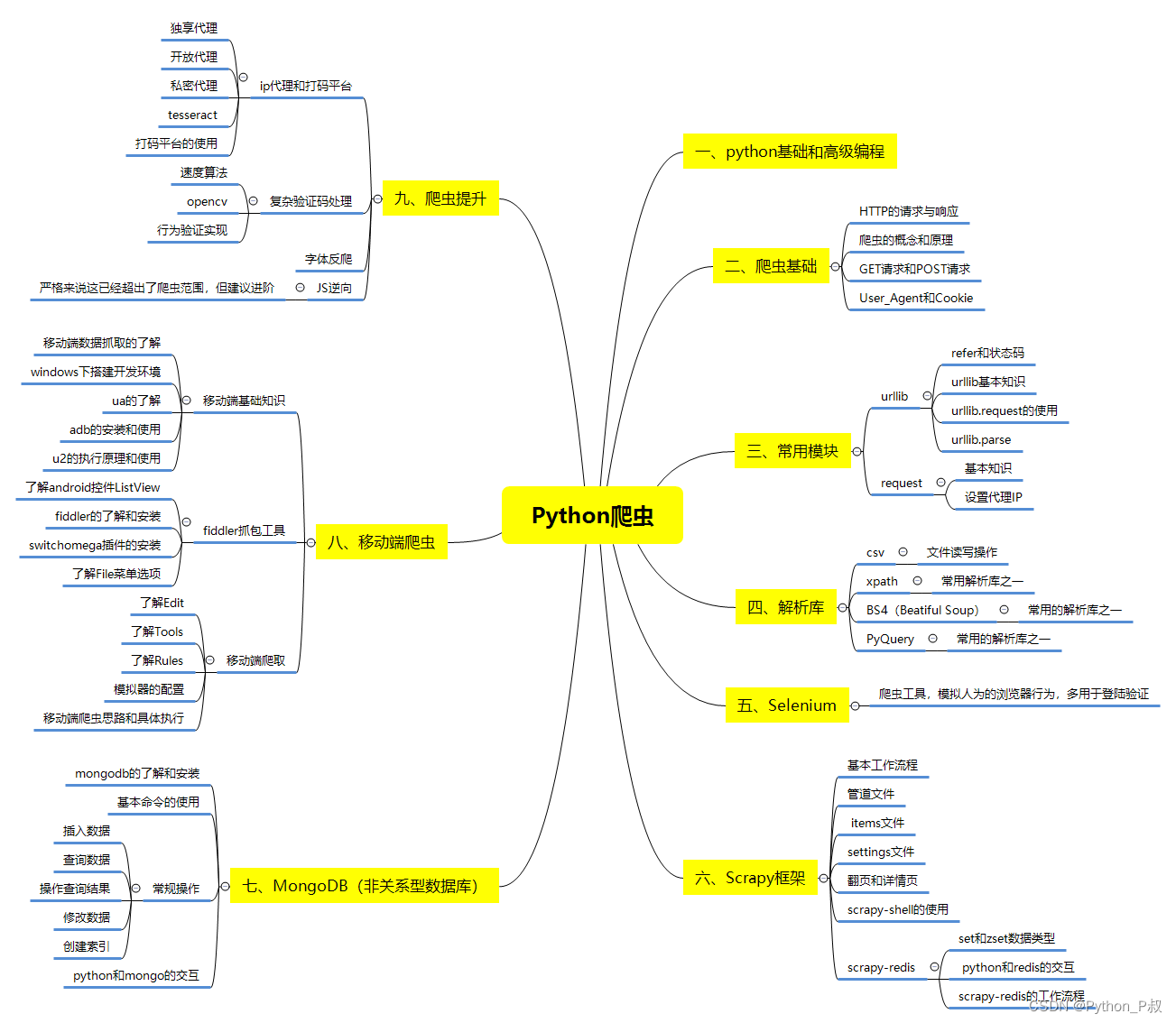
二、Python必备开发工具
工具都帮大家整理好了,安装就可直接上手!
三、最新Python学习笔记
当我学到一定基础,有自己的理解能力的时候,会去阅读一些前辈整理的书籍或者手写的笔记资料,这些笔记详细记载了他们对一些技术点的理解,这些理解是比较独到,可以学到不一样的思路。

四、Python视频合集
观看全面零基础学习视频,看视频学习是最快捷也是最有效果的方式,跟着视频中老师的思路,从基础到深入,还是很容易入门的。

五、实战案例
纸上得来终觉浅,要学会跟着视频一起敲,要动手实操,才能将自己的所学运用到实际当中去,这时候可以搞点实战案例来学习。
六、面试宝典
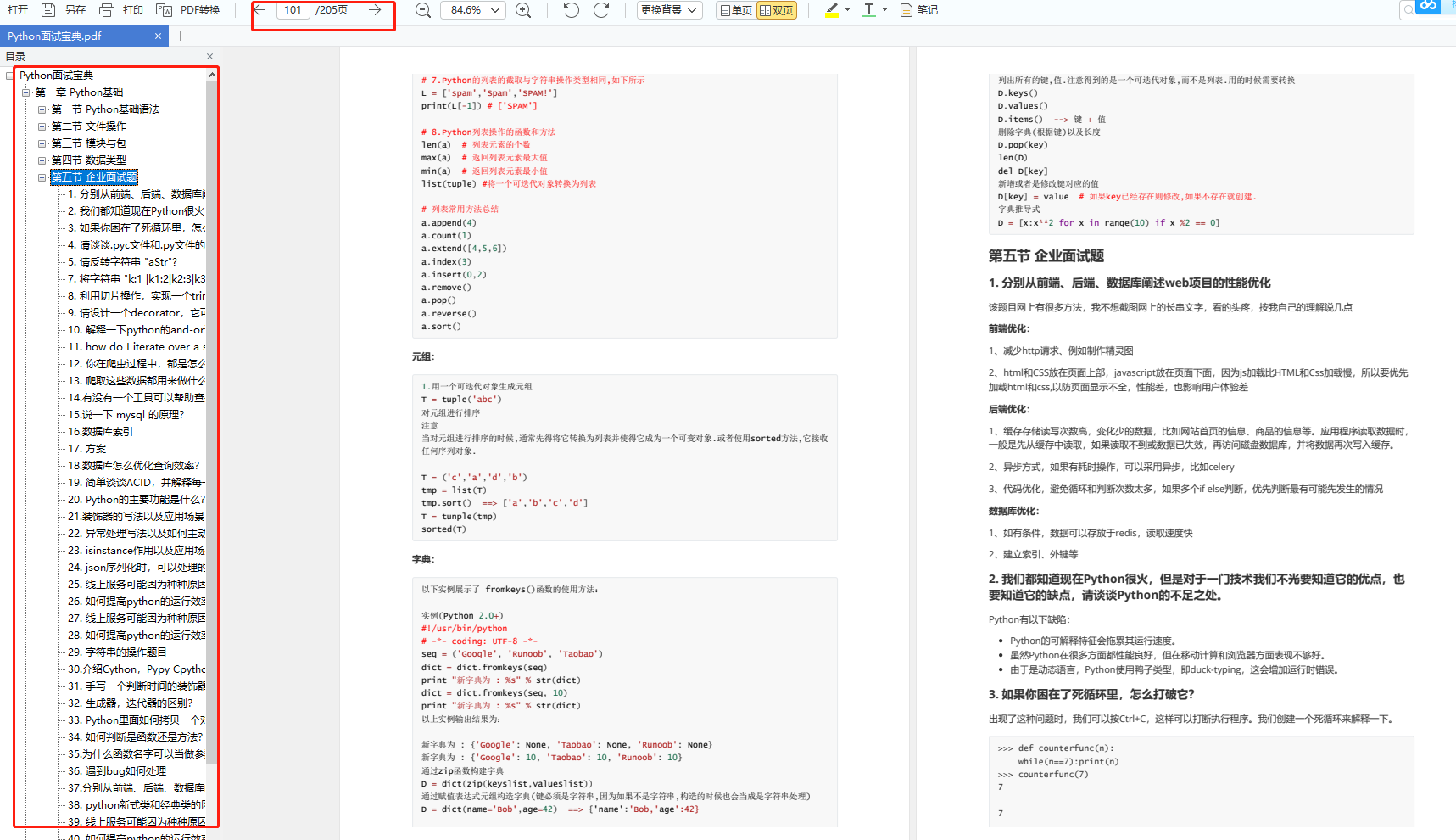

简历模板
👉CSDN大礼包🎁:全网最全《Python学习资料》免费赠送🆓!(安全链接,放心点击)
